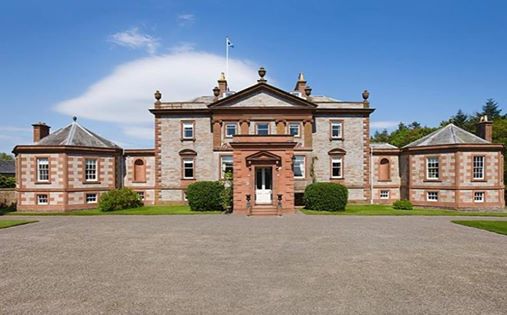The Grand Lodge of Antient Free and Accepted Masons of Scotland
JOHN PAUL JONES’ BIRTHPLACE FOR SALE
THE Scottish birthplace of one of the best-known military leaders of the American Revolution has come on the market for £1.65m. John Paul Jones (1747 – 1792) is best known as “the Father of the American Navy” – thanks to his incredible prowess as a military commander at sea. Jones was born to the head gardener of the estate.
In the American Revolution [sic – War of Independence!] of the 18th century he fought against the Royal Navy – raiding, sinking and seizing ships in seafaring action which turned the tide for revolutionary forces.
Today he is revered by historians across the world as one of the central figures in the birth of the USA – remembered especially for his audacious raid on Whitehaven, Cumbria, in 1778.
Jones was born at the impressive Arbigland estate in Dumfries. Now the incredible Georgian property is up for sale – along with its seven bedroom mansion, three guest cottages and incredible coastal gardens where Jones may have first set eyes on the sea. It also comes with 24 acres of land, including private woodlands and a lake.
The cottage – just a few minutes walk from the main house – has been transformed into the John Paul Jones Birthplace Museum and Visitor Centre.
In 1761 – at the age of 13 – Jones went to sea, as a young sailor aboard British merchant and slave ships.
Working his way up through the ranks, he was eventually commissioned as a senior lieutenant in the US Navy when revolution broke out in 1775.
He distinguished himself as a military fighter against British ships in the Bahamas – where he had the honour of hoisting the first US flag on a military ship.
Then in 1776 he was given command of his own ship, and began a wildly successful career as a naval captain and celebrity figure in the revolution.
In 1777 he sailed to France – becoming close friends with Benjamin Franklin – and he was integral to the creation of an alliance with the country.
From there he led raids on the British home waters – and perhaps most famously captained a raid on Whitehaven.
After this he even crossed from Whitehaven to Scotland in a failed attempt to capture the Earl of Selkirk and hold him ransom.
Although it failed the attempted kidnapping and the raid on Whitehaven had a huge effect on British morale, bringing the North American conflict to their own doorsteps.
In 1779 – as the captain of the USS Bonhomme Richard – he was then engaged in one of the most famous battles in US Naval history.
In a three and a half hour battle off the coast of Yorkshire Jones captured two British ships.
It is famously said he replied to a British request to surrender with the defiant phrase, “I have not yet begun to fight!”
From there Jones faded into obscurity among his peers – eventually dying in France where he was buried in an unmarked grave.
But now historians consider him to be one of the most vital figures in the early days of the USA – and he is widely taught in high school history classrooms across the country.
The original building at Arbigland House was McCulloch’s Castle – which was used from the Iron Age up to around 1500.
In 1679 the Craik family bought the land and transformed it into the estate which still stands today. 1 Arbigland estate in Dumfries. 2 John Paul Jones (centre), the US naval hero of the war of independence. 3 The property comes with 24 acres of land 4 The property was transformed into an estate in 1679
[John Paul’s father was the Head Gardener at Arbigland and as a boy he would have been very familiar with the gardens tended by his father shown here. As well as that the call of the sea would have been strong given the seaside location of Arbigland – Ed.]OOPS! We forgot to explain why this piece is here!! John Paul Jones (1747-1792) was a Scottish Freemason. He was Initiated in Lodge St Cuthbert, No.41 (Kirkcudbright) in 1770. When in France he affiliated to Les Neuf Soeurs (Paris) in 1780 – Ed.
